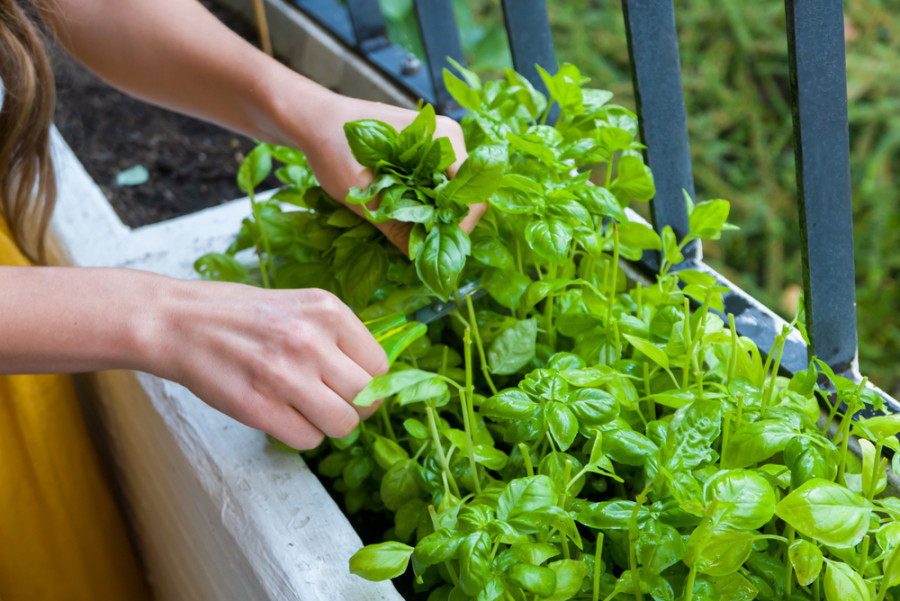 16.12°C Kathmandu
16.12°C KathmanduWeekender
Build your own herb garden
Owning an herb garden will save you a quick trip to the nearest vegetable vendor and bring the freshness of the season to your kitchen.
Pooja Lakhey
In Poor Richard’s Almanack, Benjamin Franklin writes “Much virtue in herbs, little in men.” Whether or not one shares his cutting observation about mankind, I think we all can agree that the essential nature of an herb is honourable. More now than ever, herb gardening has become increasingly popular, as people put more and more focus on nutritious, delicious, and fresh meals.
Especially in a culinary culture like ours where flavours play an integral part. “My kitchen never runs out of herbs,” says Abha Joshi, whose terrace is full of green and fresh herbs. “I learned all about herb gardening from my mother. As a banker, I barely have time for gardening, however, herbs are easy to maintain and require less attention as compared to other plants.”
Additionally, herbalists treasure the healing qualities of certain flowers, leaves, and roots. Herbal crafters preserve the beauty and fragrance of flowers and leaves in potpourri, wreaths, and dried arrangements. And gardeners value herbs for all their excellent qualities, including their vigour, low maintenance, and natural resistance to pests. Herb Nepal, an organic farm based in Bhaktapur has a variety of herbs in their backyard.
“When most of us think of herbs, we picture the common kitchen seasonings, such as basil, rosemary, and thyme,” says botanist Rajesh Kumar Pant. “An herb is any plant that is considered useful. For instance, the leaves, roots, seeds, stems, or flowers of an herb are a great source of flavouring, medicine, fragrance, dye, and so on. Sometimes people even grow herbs simply because they are beautiful.”
Designing an herb garden is an exercise in instant gratification; many herbs are fast-growing plants to harvest (or at least snip) within weeks of germination. So sit back and relax as we unfold your herbal garden queries one by one because right after you’re done reading this, you will want your own patch of garden.
What to plant
Which herbs will grow in your garden depends largely on what you would like to grow. Almost all herbs will grow for at least one season. Some will grow year after year. Some common herbs that people grow when first setting up an herb garden are basil, mint, cilantro, lemongrass, rosemary, thyme, oregano, parsley, aloe vera, sage, and chives.
How to get the plants
Given the current situation, one cannot step out to go looking for seedlings; however, the required seeds may be right in your kitchen counter. Some herbs are easy to start from seed, but others take a long time to germinate. Ask your local nursery if they have herbs saplings. You can also check with your neighbours as herbs can be grown from cuttings as well. Stem cuttings of suitable herbs should be taken in spring or summer when plants are healthy and growing vigorously.
Where to plant
Most of the herbs that you can grow at home need two things—sunlight and well-drained soil. This means that when considering places in your yard to plant an herb garden, you need to look for a location that gets six or more hours of sunlight a day. Make sure the plot is always well-drained.
Many people also consider convenience when selecting a place to start growing an herb garden. Planting near the kitchen will make it easier to harvest herbs from the herb garden.
For gardeners in small spaces, an herb garden could be a collection of pots. It's romantic to envision a series of small potted herbs on the kitchen windowsill, but in reality, you'll need a good-sized pot to really be able to harvest enough herbs to cook with regularly.
How to care for herbs
Many herbs, especially those native to the Mediterranean climate, must have loose, fast-draining soil. Soggy soil, especially in cooler winter temperatures, can be fatal to these plants. Plant rosemary, thyme, oregano, and bay laurel in a blend of equal parts of cactus mix and regular potting soil. Let the soil dry a bit before watering. Other herbs grow well in regular potting soil. Keep soil slightly moist, but not soggy. Fertilise once or twice a month with a liquid houseplant fertiliser.
Hopefully, you will be growing your herbs to use, so pruning and trimming won’t be a problem. If you don’t trim and use your herbs, the plants will grow tall and lanky and annual herbs will go to seed quickly. Even woody perennial herbs like rosemary and sage will grow fuller. Prune at least once a year to avoid weak deadwood.















